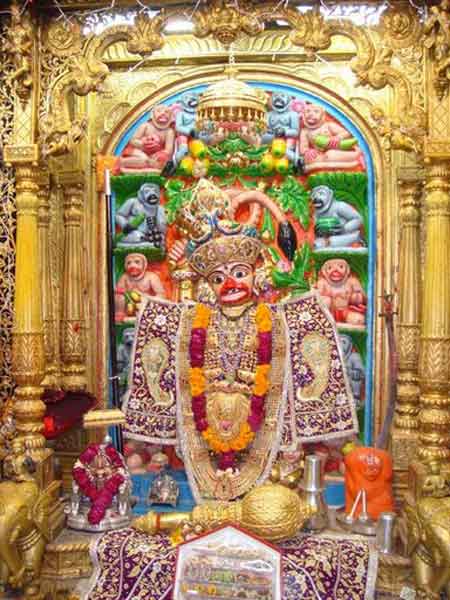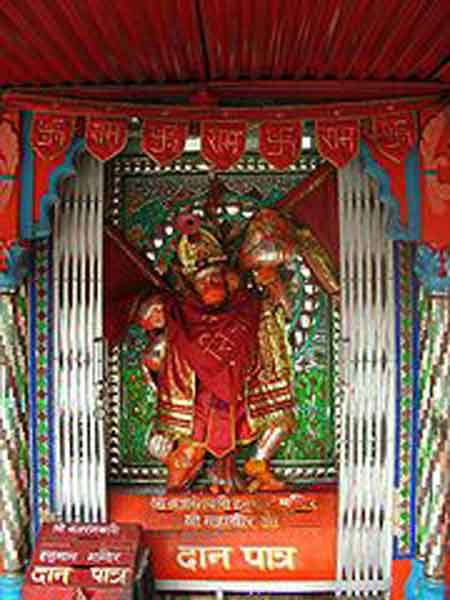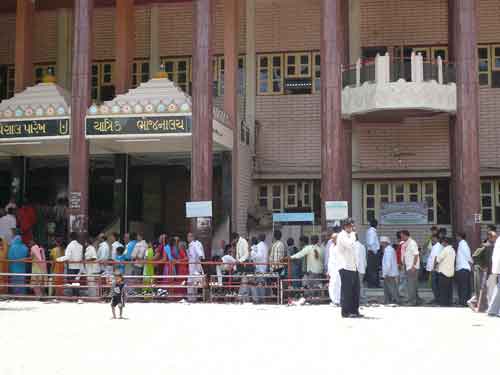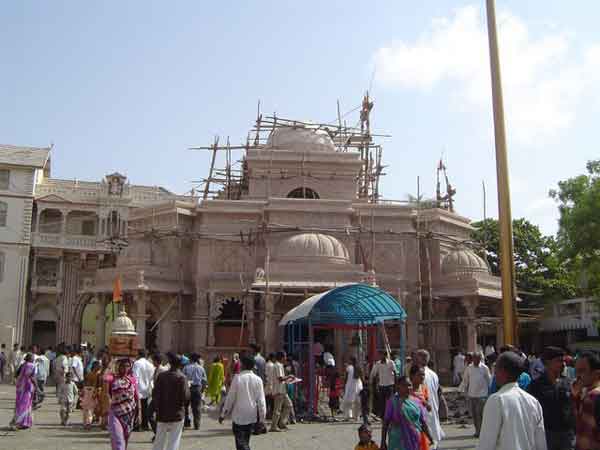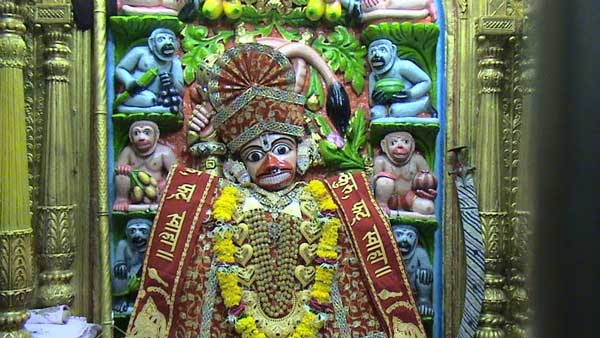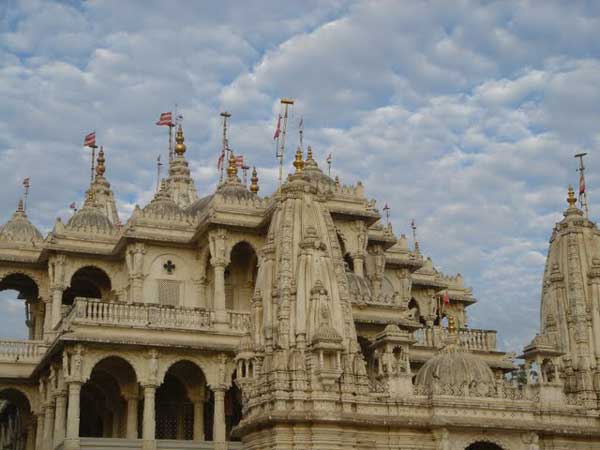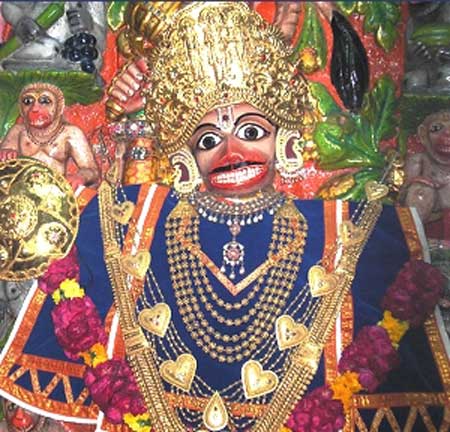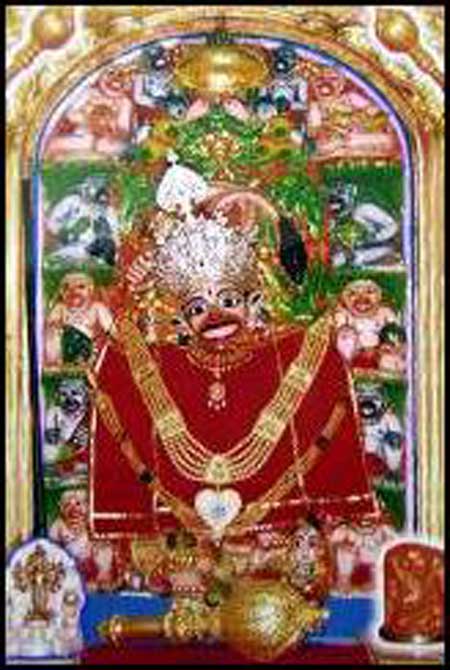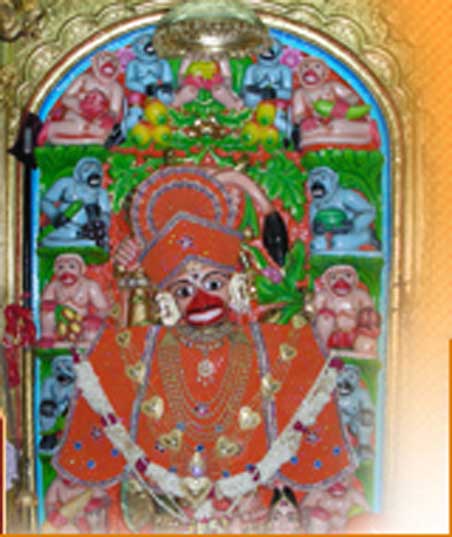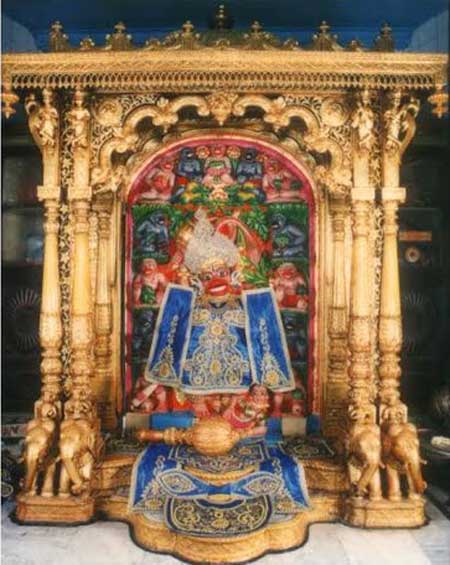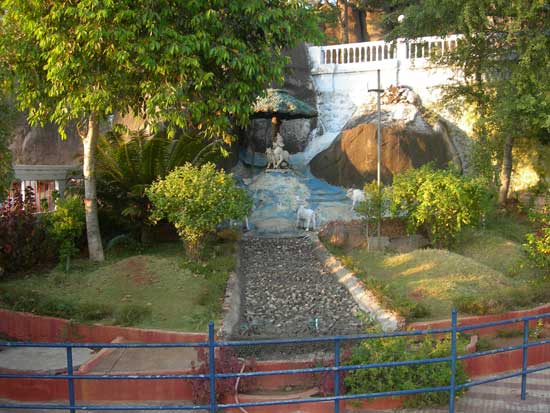Sarangpur Hanumanji Temple
Monday, 05 October 2009 10:09
Sarangpur Hanumanji Temple |
About: |
|
The Sarangpur Hanumanji Temple, also known as the Kashtabhanjan Hanuman Mandir, is one of the most famous and revered Hanuman temples in India. It is renowned for its miraculous powers and is believed to help devotees in overcoming obstacles and distress (Kashtabhanjan means "remover of distress"). The temple is managed by the Swaminarayan Sampraday and is an important spiritual destination, attracting devotees from all over the country. 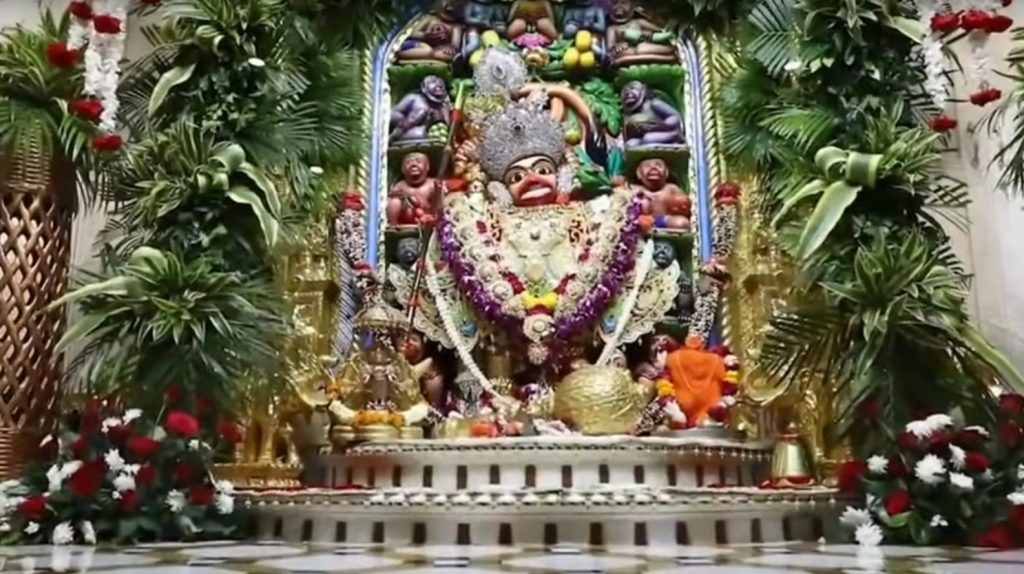 |
Location info: |
| Location:Sarangpur,Gujrat,India |
| District:Ahemadabad |
| Nearest City: Ahemadabad |
| Best time to visit: October to March |
Climate/Weather: |
| Summer (March to June): Hot, with temperatures ranging from 30°C to 45°C Monsoon (July to September): Moderate to heavy rainfall, making the surroundings lush and green Winter (October to February): Pleasant and mild, with temperatures ranging from 10°C to 25°C, ideal for visiting |
History: |
|
The Sarangpur Hanumanji Temple was established in 1899 by Shastriji Maharaj, the founder of the Bochasanwasi Akshar Purushottam Swaminarayan Sanstha (BAPS). The idol of Lord Hanuman here is unique, depicting him in a powerful, warrior-like form crushing a demon under his feet. It is said that the temple has miraculous powers to rid devotees of evil spirits and negative influences, which is why it is called "Kashtabhanjan" (remover of sorrows). Hanuman was born to 'Anjana', a female vanara. Anjana was actually an apsara or a celestial being, named 'Punjikasthala', who, due to a curse, was born on the earth as a female vanara. The curse was to be removed upon her giving birth to an incarnation of Lord Shiva.Along with Kesari, Anjana performed intense prayers to Shiva to beget Him as her Child. Pleased with their devotion, Shiva granted them the boon they sought. |
Interesting things to do: |
| Seek Blessings: Offer prayers to Lord Hanuman and seek his blessings for strength and protection. |
Interesting things to Visit: |
| Main Hanuman Idol: The imposing idol of Lord Hanuman in his "Kashtabhanjan" form is the central attraction. Swaminarayan Akshar Deri: Sidi Saiyad's Jadi: |
Mobile range info: |
| Mobile network coverage is available in Sarangpur, with major networks like Jio, Airtel, and Vodafone Idea providing reasonable connectivity. |
How to reach? |
| By Road: The temple is well-connected by road, and you can drive or take a taxi/bus from Ahmedabad, Bhavnagar, or Botad. |
| Nearest Airport:Ahemdabad airport |
| Road Transport:State Transport and Luxury buses are available from Ahmedabad and Vaodara. |
Nearest Visiting places: |
| Swaminarayan Temple, Gadhada: About 25 km away, this temple is another important pilgrimage site for Swaminarayan followers. SaritaUdyan: Akin to the Children`s park the Sarita Udyan as the name suggests is a park and is a prominent picnic spot. The recreational facilities available here are one of a kind and is a must visit. Deer Park: Adjacent to the Sarita Udyan is the deer park. It serves as a perfect refuge for those seeking some calm and peace away from the din of the city. It’s not merely for the young but you can see older people visiting the place as well. Craftsmen's Village: The highly advanced capital city, Gandhinagar also has a distinct place which is dedicated to the art of Bandhani prints .The village is situated about 7 km form the capital city. It is popular not merely for the prints but also wooden blocks carved with exquisite designs on hand printed cloth. Those of you who wish to purchase some ethnic bandhani printed fabric must visit the place as you get them at very reasonable prices. Adlaj: This spot is known to be famous for its step-well Called AdlajVav and during the ancient times this location was known as Dandi Desh, the spot pulls in tourist from far and near. Koba Teerth: During the year 1980 this holy shrine of Koba Teerth was built in memory of His Holiness Acharyashri Kailas Sagarsuriji Maharaj Saheb. The greatest wonder of this shrine is that, every year during the month May dated 22nd, the ray of the rising sun will pass through to the pinnacle and shine on the forehead of the idol of Bhagwan Mahavir Swami, this idol is beautifully placed in the shrine in the position of Padmasana and white in colour which enhances divinity to the pilgrims and visitors. This wonder temple of Jain pilgrim center is situated on the way between Gandhinagar and Ahemdabad and on the banks of the River Sabarmati.
|
Nearest Petrol Pump: |
| Petrol Pump:Sarangapur,Ahmedabad,Gujarat,India |
Hotels/Lodge/Accommodation: |
| Hotel Sanmati:Sarangpur,Ahmedabad,Gujrat,India Sky Camy Hotel:Sarangpur,Ahmedabad,Gujrat,India |
Things to carry: |
| Comfortable walking shoes Sunglasses, hat, and sunscreen Drinking water and light snacks A camera or smartphone for capturing the temple's beauty A light shawl or jacket, especially if visiting in winter |
Tips & Suggestions: |
| Visit early in the morning or during the evening aarti for a more spiritual experience. Dress modestly, as this is a religious site, and remove footwear before entering the temple. Maintain silence and respect the customs and rituals of the temple. If you plan to stay overnight, book your accommodation in advance, especially during weekends or festive seasons. Carry some cash, as card payments might not be accepted at smaller shops and stalls near the temple. |
Help Line/Phone Number: |
| Police Station:100 |
| Nearest Hospital:Rajasthan hospital:Ahmedabad,Gujarat,India |
| Society/Community Phone Number: |
| Links:www.associatedcontent.com |
